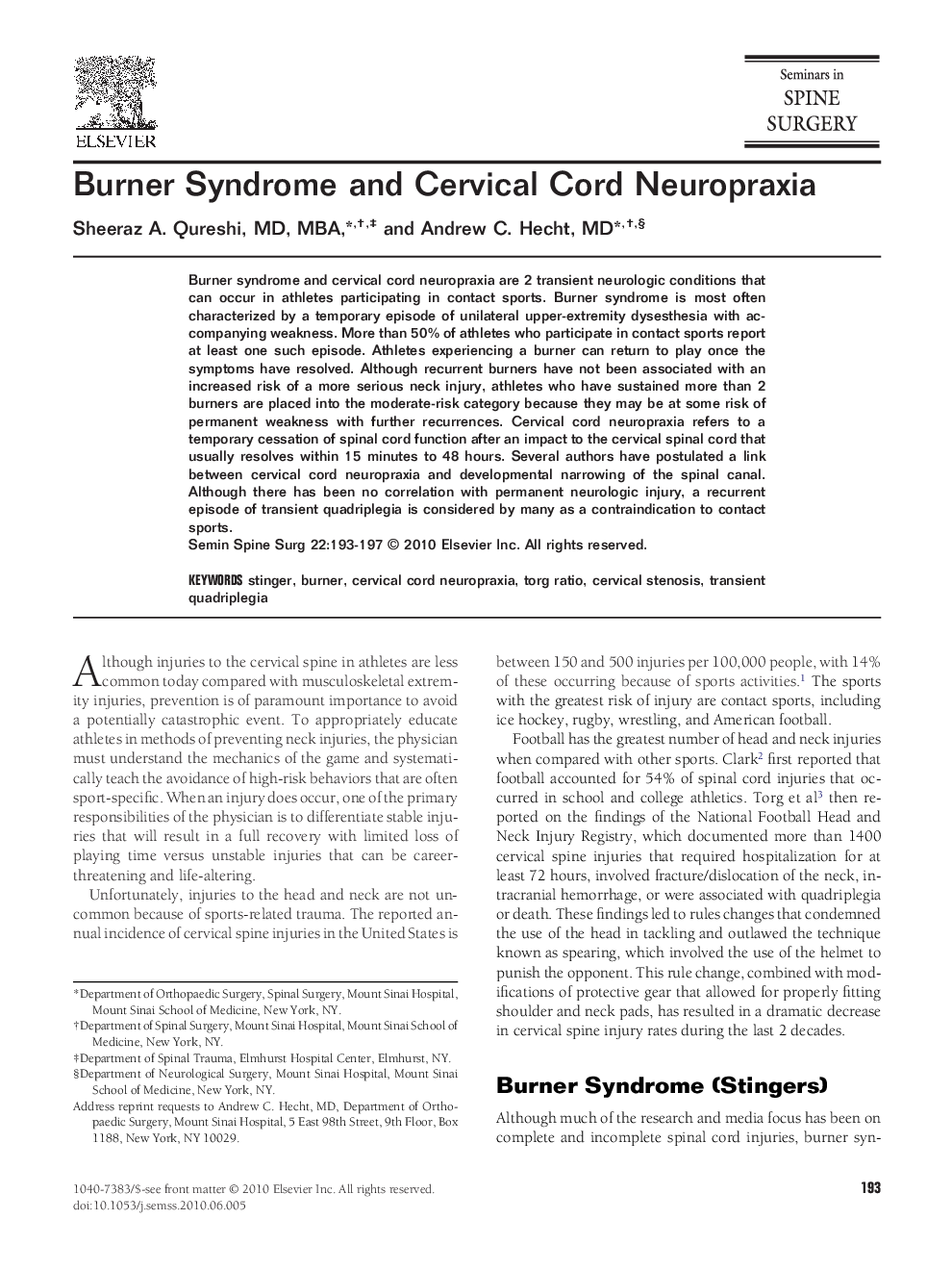| Article ID | Journal | Published Year | Pages | File Type |
|---|---|---|---|---|
| 4094834 | Seminars in Spine Surgery | 2010 | 5 Pages |
Burner syndrome and cervical cord neuropraxia are 2 transient neurologic conditions that can occur in athletes participating in contact sports. Burner syndrome is most often characterized by a temporary episode of unilateral upper-extremity dysesthesia with accompanying weakness. More than 50% of athletes who participate in contact sports report at least one such episode. Athletes experiencing a burner can return to play once the symptoms have resolved. Although recurrent burners have not been associated with an increased risk of a more serious neck injury, athletes who have sustained more than 2 burners are placed into the moderate-risk category because they may be at some risk of permanent weakness with further recurrences. Cervical cord neuropraxia refers to a temporary cessation of spinal cord function after an impact to the cervical spinal cord that usually resolves within 15 minutes to 48 hours. Several authors have postulated a link between cervical cord neuropraxia and developmental narrowing of the spinal canal. Although there has been no correlation with permanent neurologic injury, a recurrent episode of transient quadriplegia is considered by many as a contraindication to contact sports.
